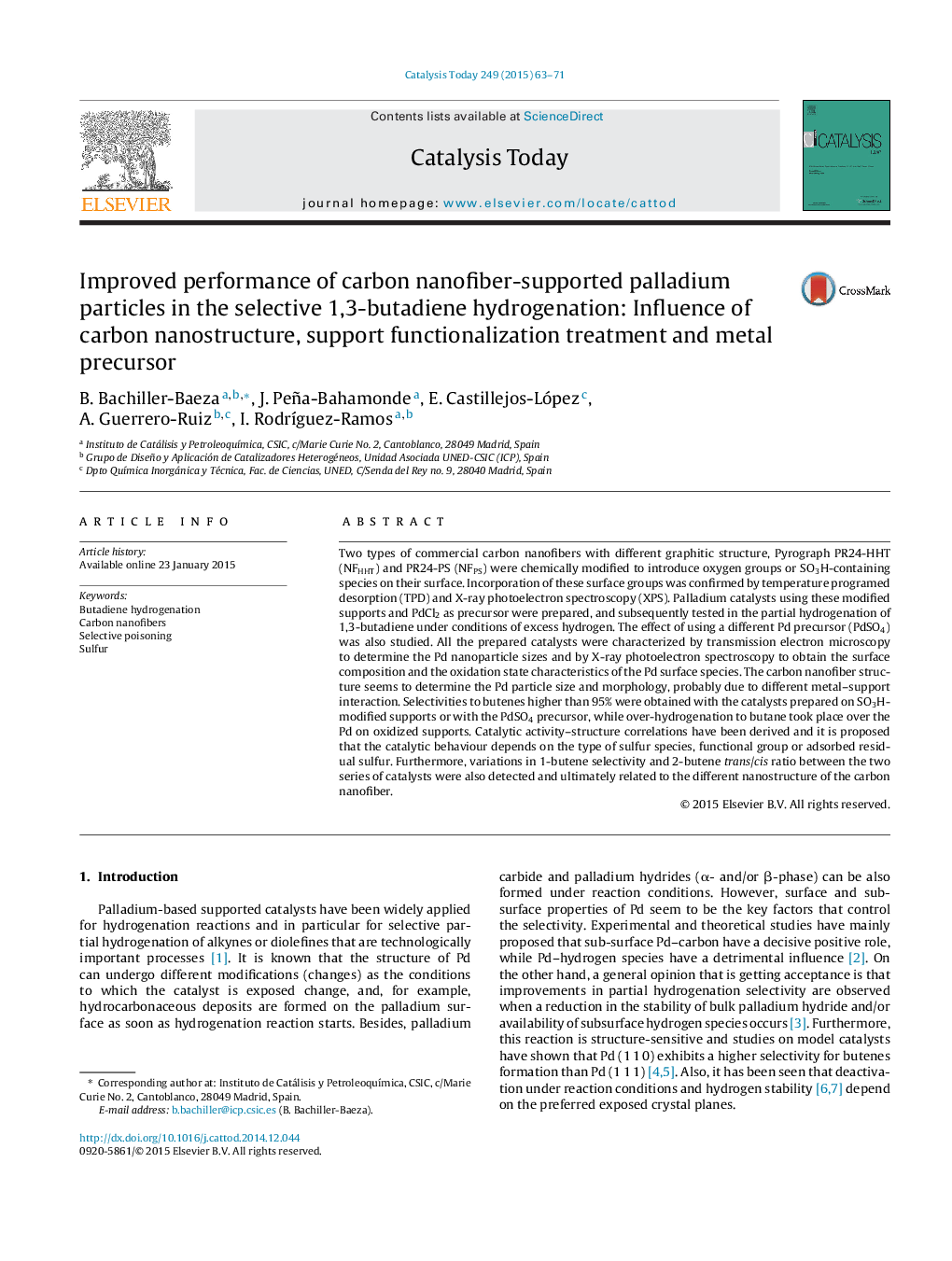| Article ID | Journal | Published Year | Pages | File Type |
|---|---|---|---|---|
| 53710 | Catalysis Today | 2015 | 9 Pages |
•Carbon nanofiber supported Pd catalysts were studied in selective hydrogenation of 1,3-butadiene.•Catalytic performance depends on Pd size, morphology and electron density induced by nanofiber structure.•Improvement in selectivity to butenes for catalysts with sulfur species.•Performance depending on type of sulfur, SO3H-groups or residual adsorbed sulfur.•Electronic and geometric effects are invoked to explain different catalytic performances.
Two types of commercial carbon nanofibers with different graphitic structure, Pyrograph PR24-HHT (NFHHT) and PR24-PS (NFPS) were chemically modified to introduce oxygen groups or SO3H-containing species on their surface. Incorporation of these surface groups was confirmed by temperature programed desorption (TPD) and X-ray photoelectron spectroscopy (XPS). Palladium catalysts using these modified supports and PdCl2 as precursor were prepared, and subsequently tested in the partial hydrogenation of 1,3-butadiene under conditions of excess hydrogen. The effect of using a different Pd precursor (PdSO4) was also studied. All the prepared catalysts were characterized by transmission electron microscopy to determine the Pd nanoparticle sizes and by X-ray photoelectron spectroscopy to obtain the surface composition and the oxidation state characteristics of the Pd surface species. The carbon nanofiber structure seems to determine the Pd particle size and morphology, probably due to different metal–support interaction. Selectivities to butenes higher than 95% were obtained with the catalysts prepared on SO3H-modified supports or with the PdSO4 precursor, while over-hydrogenation to butane took place over the Pd on oxidized supports. Catalytic activity–structure correlations have been derived and it is proposed that the catalytic behaviour depends on the type of sulfur species, functional group or adsorbed residual sulfur. Furthermore, variations in 1-butene selectivity and 2-butene trans/cis ratio between the two series of catalysts were also detected and ultimately related to the different nanostructure of the carbon nanofiber.
Graphical abstractFigure optionsDownload full-size imageDownload high-quality image (143 K)Download as PowerPoint slide
